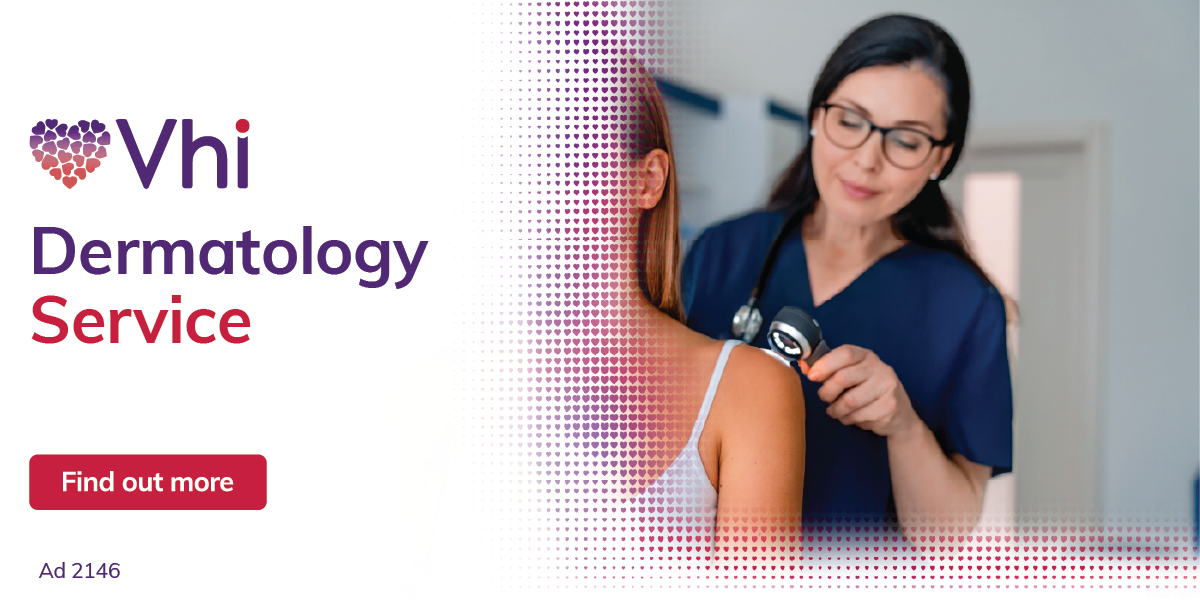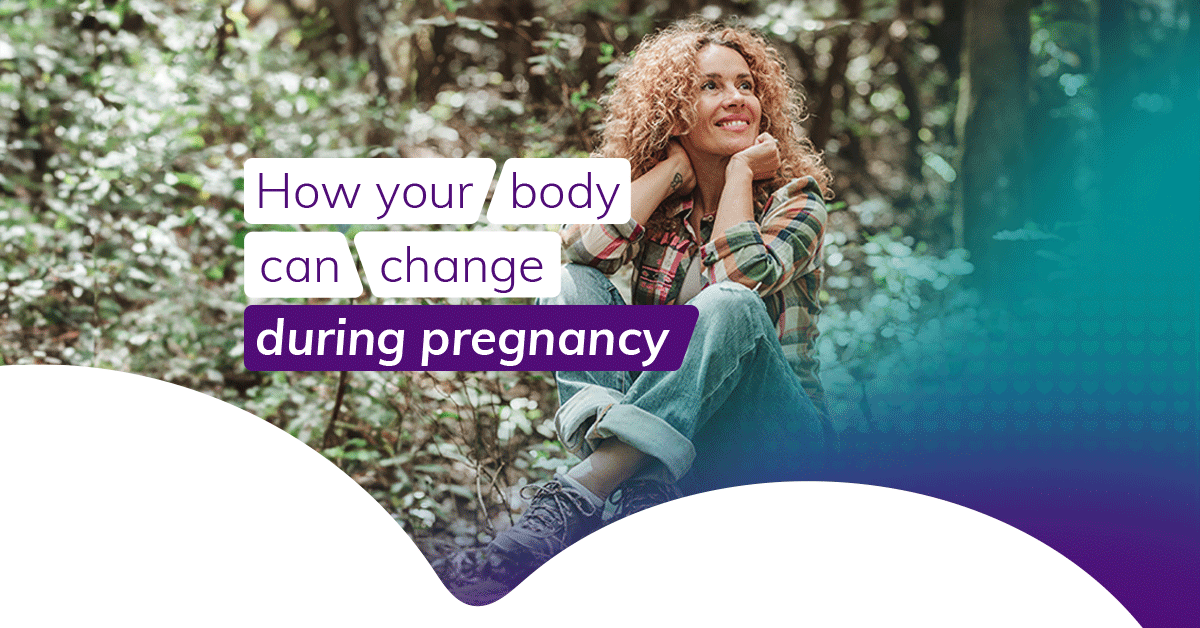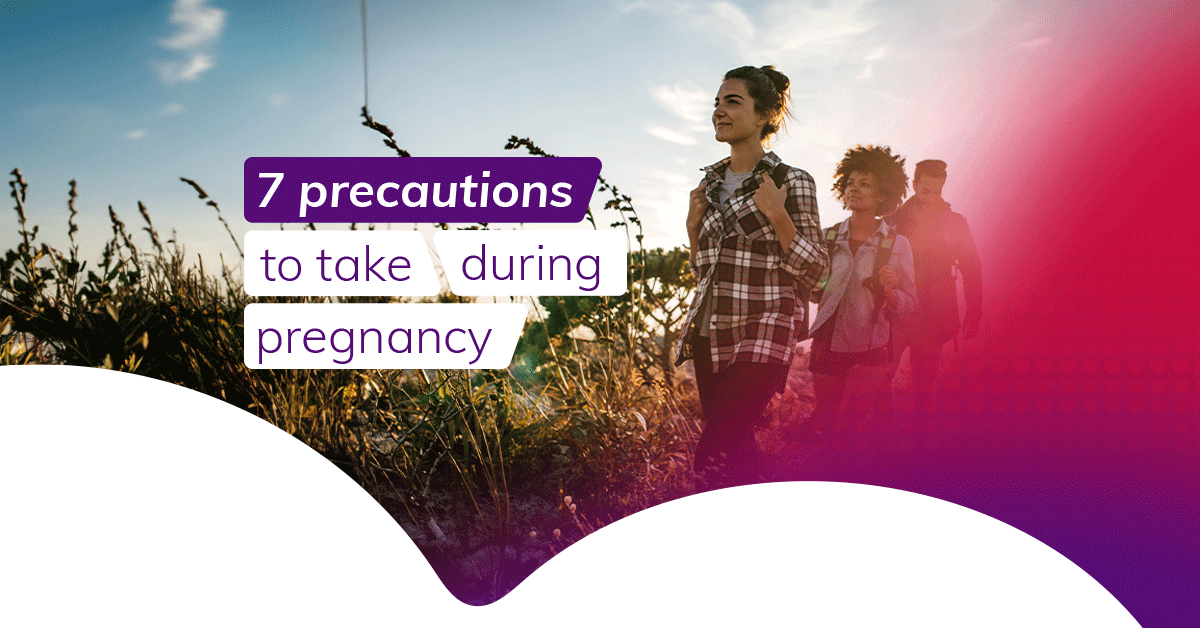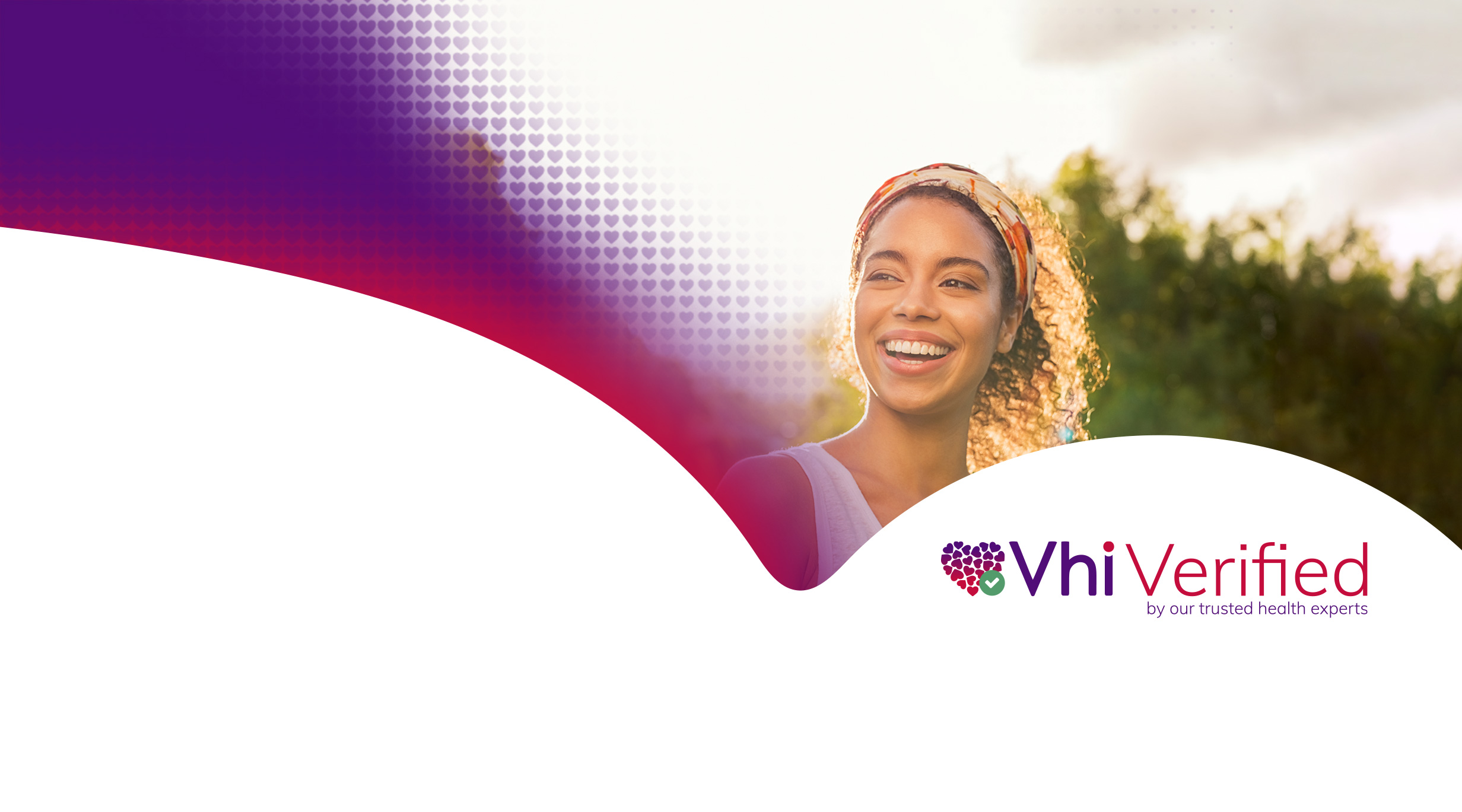
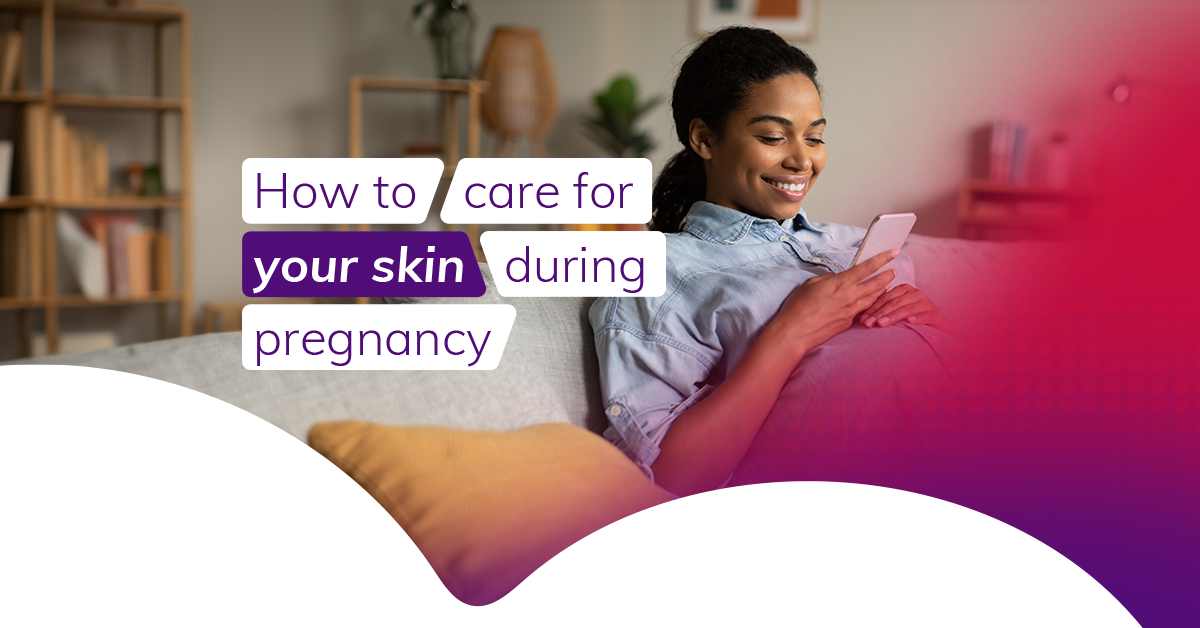
How to care for your skin during pregnancy
If there’s one certainty about pregnancy, it’s that it is full of uncertainties about just how many changes your body will undergo! Some women have that infamous ‘glow’, many will find their hair thickens, others might find their eczema flares up, and almost all will get some stretch marks. Vhi consultant dermatologist, Dr Rebecca Hellen, explains these changes and highlights the products and ingredients women should avoid during pregnancy and those that are safe for use.
Why changes can occur to your skin during pregnancy
During pregnancy, there are natural changes in hormones, the immune system, and the cardiovascular system, which can impact women’s skin, hair, and nails:
- Hormonal: Fluctuating hormones during pregnancy are mainly responsible for the changes in pigmentation (colour) that can happen to women’s skin during pregnancy.
- Immune system: When your little one starts to grow, your immune system changes to support your baby. This can impact skin conditions like eczema or psoriasis, because they are linked to the immune system.
- Cardiovascular: There is an increase in blood volume in a woman’s body during pregnancy and this can result in flushing or blushing of the skin, spider naevi (a red or purple mark just under the skin with lots of little lines coming from the centre) and varicose veins.
Common skin, hair and nail conditions pregnant women can experience
Almost all women will experience an increase in pigmentation in their skin during pregnancy. This could appear as a dark line in the stomach area (called the ‘linea nigra’), darkening of the areola (nipples), or increased pigmentation in the skin folds (under the breasts, the armpits and so on). Other common conditions of the skin, hair and nails include:
- Melasma, also known as the mask of pregnancy. This presents as light to dark brown discolouration on the skin of the face. It usually appears as patches on the cheeks, forehead, or chin. It’s more likely to occur in the second half of your pregnancy. The extra pigmentation is driven by hormones and UV light exposure, so it’s important to always wear sunscreen and avoid excessive sun exposure by seeking shade and wearing a hat. Tinted broad-spectrum sunscreens with a SPF of 30 to 50 are best to help prevent pigmentation and can help even out skin tone when applied. Tinted sunscreen also offers protection from visible light, which is known to make conditions like melasma worse. Regular sunscreen only protects against invisible light (UVA and UVB), because only sunscreen with a visible tint can protect from visible light. Melasma can resolve postpartum and may recur in subsequent pregnancies. It may also recur if you start taking oral contraception postpartum. If your melasma doesn’t resolve a few weeks after you give birth, visit your healthcare provider to discuss possible treatments.
- Your moles might get darker during pregnancy due to hormonal changes. This can be normal, but I still advise women to keep an eye on any changes to the size, shape, or colour of their moles. If concerned about a new or changing mole in pregnancy, it is always advisable to get it checked with your healthcare provider.
- Stretch marks. Up to 90% of pregnant women will experience stretch marks, and they are nothing to worry about. I’ll discuss stretch marks in more detail further on.
- Many women will notice their hair becomes thicker during pregnancy because high levels of oestrogen prevent normal hair shedding. After pregnancy, when the levels of oestrogen drop, it is normal to notice extra hair shedding in the post-partum period. Your hair growth should recover within 6-12 months after pregnancy, however.
- Your nails can become more brittle during pregnancy and be more prone to breaking or splitting.
- Polymorphic Eruption of Pregnancy (PEP). This is a skin rash that typically begins as itchy bumps in the stretch marks of the abdomen. It occurs in the last three months of pregnancy and usually clears a few weeks after delivery. It generally occurs in the first pregnancy and is more common in multiple pregnancies (twins or triplets). It doesn’t tend to recur in future pregnancies. Speak to your healthcare provider if you think you might have PEP, and they will guide you on next steps to help alleviate your symptoms.
If you experience any of these conditions, follow up with your healthcare provider to discuss the best next steps.
The impact of pregnancy on pre-existing skin conditions
It’s possible for pre-existing skin conditions to change throughout pregnancy. Unfortunately, we can’t predict how a skin condition will behave during your pregnancy because it’s quite individual. Eczema will often get worse or flare up more. Some women can even flare up with eczema for the first time while pregnant. If this happens, visit your healthcare provider, and they will provide treatment for your symptoms to help with the dryness and itching. If you have psoriasis, you could see it improve, or it may not change at all. In rarer cases, some women will find their psoriasis gets worse. If we look at acne, some women can see it improve at the beginning of pregnancy and then get worse toward the end of pregnancy as there’s a shift in hormones. The changes in your skin condition can fluctuate through each trimester and isn’t a cause for concern. But, if you’re flaring up badly or often, visit your healthcare provider for their guidance.
Pregnancy stretch marks
There are two types of stretch marks (known as striae gravidarum). There are the reddish or purplish stretch marks (called striae rubra) which occur first and gradually lose their colour over months to years, becoming white or silvery (called striae alba). We don’t know exactly why some women get stretch marks and others don’t, but it’s thought that genetics play a role. There are lots of creams and oils marketed as treatments for stretch marks, but none of these have high-quality evidence supporting their efficacy. Post-pregnancy, vascular lasers can help reduce the redness in the red stretch marks, and resurfacing treatments like micro needling can help to restore some collagen in the stretch marks, but there is no treatment that can clear stretch marks fully―they’re a completely natural and normal part of pregnancy and becoming a mother. They’re something to be proud of, that represent the amazing journey your body has been on.
Pregnancy and acne
Acne during pregnancy is caused by the changes in hormones that women experience. Most of the women who get acne during pregnancy have already had it previously. It’s not that pregnancy itself causes acne; there are a number of factors that cause acne, such as excess oil production, clogged pores, acne-causing bacteria and genetic factors. During the start of pregnancy, there is a surge of hCG (a hormone produced by the placenta), which leads to greater progesterone production. Progesterone builds up the lining of the womb and the levels continue to rise throughout pregnancy. Progesterone is a well-known hormonal trigger of acne, and this is thought to be the main driver of acne in pregnancy. There is also an increase in prolactin towards the end of pregnancy, which causes further oil production that can contribute to clogged pores and acne. It’s highly individual how your acne will evolve (or remain the same) throughout pregnancy, but it’s always best to speak to your healthcare provider if you have any concerns.
Maternity skincare dos and don’ts
Women often ask about safe skincare products for pregnancy, and there are simple dos and don’ts you can follow:
- Don’t use products that contain certain “active” ingredients, such as retinol, retinoids, and salicylic acid. These can be harmful to the developing baby.
- Don’t use products that are heavily scented or very soapy in water. They may cause skin irritation and worsen pre-existing skin conditions.
- Do use products that are targeted at eczema-prone skin because they will be gentle on your skin. These shouldn’t have active ingredients or strong fragrances.
- Do moisturise your skin daily, with a suitable, gentle product. Some women find that moisturisers with menthol can be helpful for itchy skin on the body; this will be highly individual, however, so test it out on a small area of skin and see.
- Do wear a broad-spectrum tinted sunscreen with an SPF of 30 to 50 after cleansing and moisturising your skin.
If you’re unsure about any ingredient or product during pregnancy, or you usually use prescription skincare, chat to your healthcare provider for guidance. The same applies if anything about your hair, skin, or nails, is worrying you during your pregnancy; it’s good to speak to your healthcare provider for peace of mind.
This content is for information purposes only and is not intended or implied to be a substitute for professional medical advice, diagnosis, or treatment. Always seek advice from your GP or an appropriate medical professional if you have concerns about your health, or before commencing a new healthcare regime. If you believe that you are experiencing a medical emergency call 999 / 112 or seek emergency assistance immediately.
Meet our Vhi Verified Expert
Dr Rebecca Hellen

